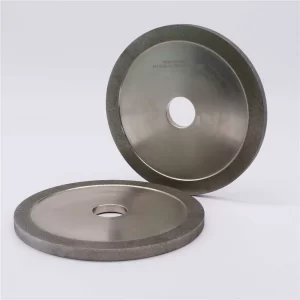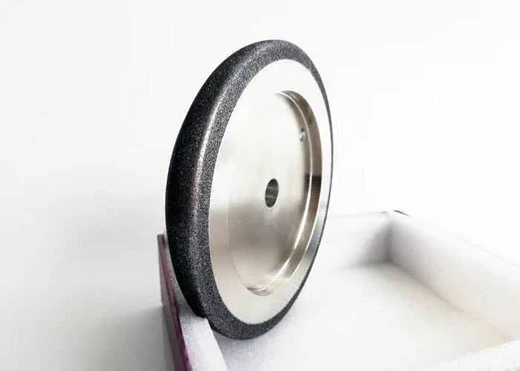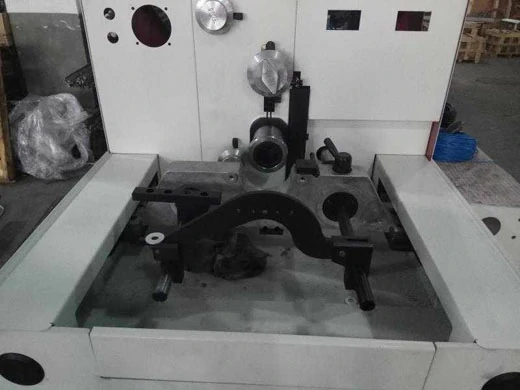Cylindrical grinding is a vital process in the manufacturing industry, and the choice of the grinding wheel plays a crucial role in achieving high precision, surface finish, and productivity. Choosing the right cylindrical grinding wheel can be a challenging task, as it involves considering various factors such as material to be ground, grinding conditions, and machine requirements. In this article, we will explore the key considerations for selecting the cylindrical grinding wheel to achieve optimal results in 2019.
Understanding Cylindrical Grinding Wheels
Before delving into the selection criteria, it’s essential to have a basic understanding of cylindrical grinding wheels. These wheels are made from abrasive particles bonded together by various bonding materials such as resin, vitrified, or metal. The abrasive particles are responsible for removing material from the workpiece, and the bonding material holds the abrasive grains in place during the grinding process.
Cylindrical grinding wheels come in a variety of shapes, sizes, and abrasive types, each designed for specific applications. Understanding the composition and characteristics of different grinding wheels is crucial for making an informed decision when choosing the right wheel for a particular grinding application.

Key Factors for Choosing the Cylindrical Grinding Wheel
Several key factors need to be considered when selecting a cylindrical grinding wheel. These factors can significantly impact the performance, quality, and efficiency of the grinding process. Let’s explore some of the essential considerations:
1. Workpiece Material
The material of the workpiece being ground is a critical factor in determining the type of abrasive and bonding material required for the grinding wheel. For example, grinding hard materials like steel or tungsten carbide requires a wheel with abrasive grains such as diamond or cubic boron nitride (CBN) that can withstand high grinding forces and maintain sharp cutting edges.
On the other hand, when grinding softer materials such as aluminum or brass, abrasive grains like aluminum oxide or silicon carbide are preferred. Matching the grinding wheel to the workpiece material is essential for achieving efficient material removal and minimizing heat generation during the grinding process.
2. Grinding Conditions
The grinding conditions, including the grinding speed, coolant application, and depth of cut, play a significant role in determining the suitable grinding wheel specifications. Higher grinding speeds may necessitate the use of vitrified bonded wheels to withstand the thermal loading and maintain dimensional accuracy.
Additionally, the use of coolant during the grinding process can have implications for the choice of bonding material, as some bond systems are more compatible with coolant than others. Understanding the specific requirements of the grinding operation is crucial for selecting a wheel that can deliver the desired performance under the given conditions.

3. Machine Compatibility
The compatibility of the grinding wheel with the grinding machine is another important consideration. Factors such as wheel size, wheel speed, and mounting options need to align with the specifications of the grinding machine. Overspeeding or undersizing the grinding wheel can lead to safety hazards and compromise the quality of the grinding operation.
Furthermore, the mounting method, whether using flanges or an arbor, should be compatible with the wheel and machine specifications to ensure proper balance and secure mounting. Considering the machine compatibility ensures safe and efficient grinding operations.
Types of Cylindrical Grinding Wheels
Cylindrical grinding wheels are available in various types, each designed for specific applications and materials. Understanding the characteristics of different wheel types can help in making an informed selection based on the grinding requirements. Some common types of cylindrical grinding wheels include:
1. Straight Wheels
Straight wheels are the most common type of cylindrical grinding wheel and are used for external grinding of cylindrical and centerless grinding. They are available in a wide range of diameters and widths to accommodate different workpiece geometries and grinding conditions. Straight wheels are versatile and can be used for both rough and precision grinding operations.
2. Cylinder Wheels
Cylinder wheels are used for grinding the outside diameter of a workpiece. They are particularly effective for grinding long, straight surfaces and are available in various diameters and widths to suit different applications. Cylinder wheels are often used in precision grinding operations to achieve tight tolerances and excellent surface finish.
3. Tapered Wheels
Tapered wheels are designed for grinding threads, gear teeth, and other similar components that require a tapered profile. These wheels are also used for generating conical surfaces and are available in different angles to accommodate specific taper requirements. Tapered wheels are essential for producing accurate and precise tapered workpieces.
4. Dish Wheels
Dish wheels, also known as dish grinding wheels, are used for grinding the outside radius of a workpiece. They feature a concave shape, allowing for easy access to the workpiece and efficient material removal. Dish wheels are commonly used in tool and cutter grinding applications where maintaining the shape and sharpness of cutting tools is crucial.
5. Saucer Wheels
Saucer wheels have a unique saucer-shaped profile and are primarily used for grinding the inside surfaces of cylindrical and conical workpieces. These wheels are particularly effective for grinding the flanks of gears and other components with intricate internal profiles. Saucer wheels come in a range of sizes and abrasive types to suit different grinding requirements.
Choosing the right cylindrical grinding wheel is a critical decision that directly impacts the quality, productivity, and cost-effectiveness of the grinding process. By considering factors such as workpiece material, grinding conditions, machine compatibility, and the characteristics of different grinding wheel types, manufacturers can optimize their grinding operations for superior performance and efficiency. As advancements in abrasive technology continue to evolve, staying informed about the latest developments in grinding wheel materials and designs is essential for making well-informed choices in the constantly changing landscape of cylindrical grinding.
.webp)
